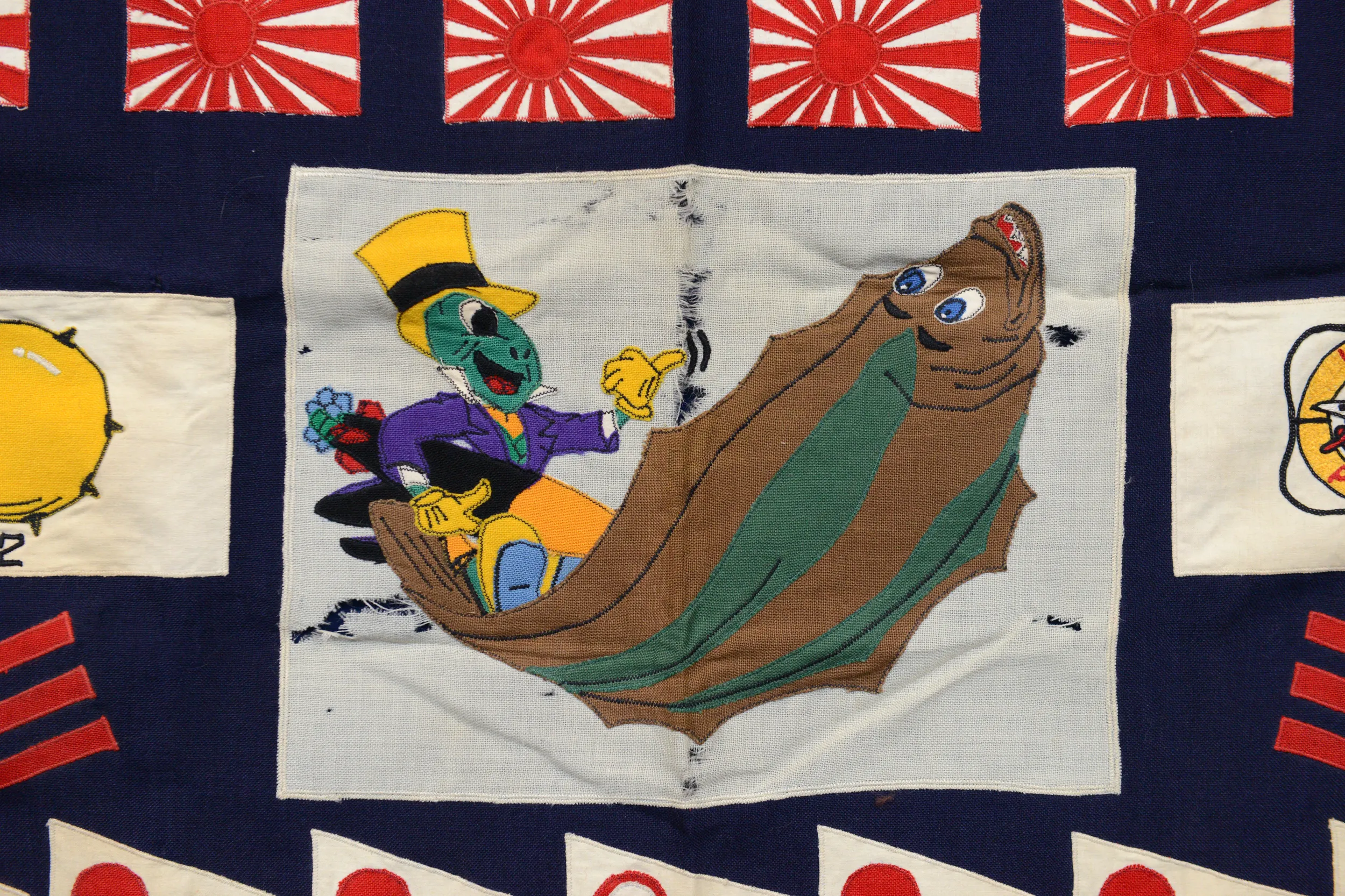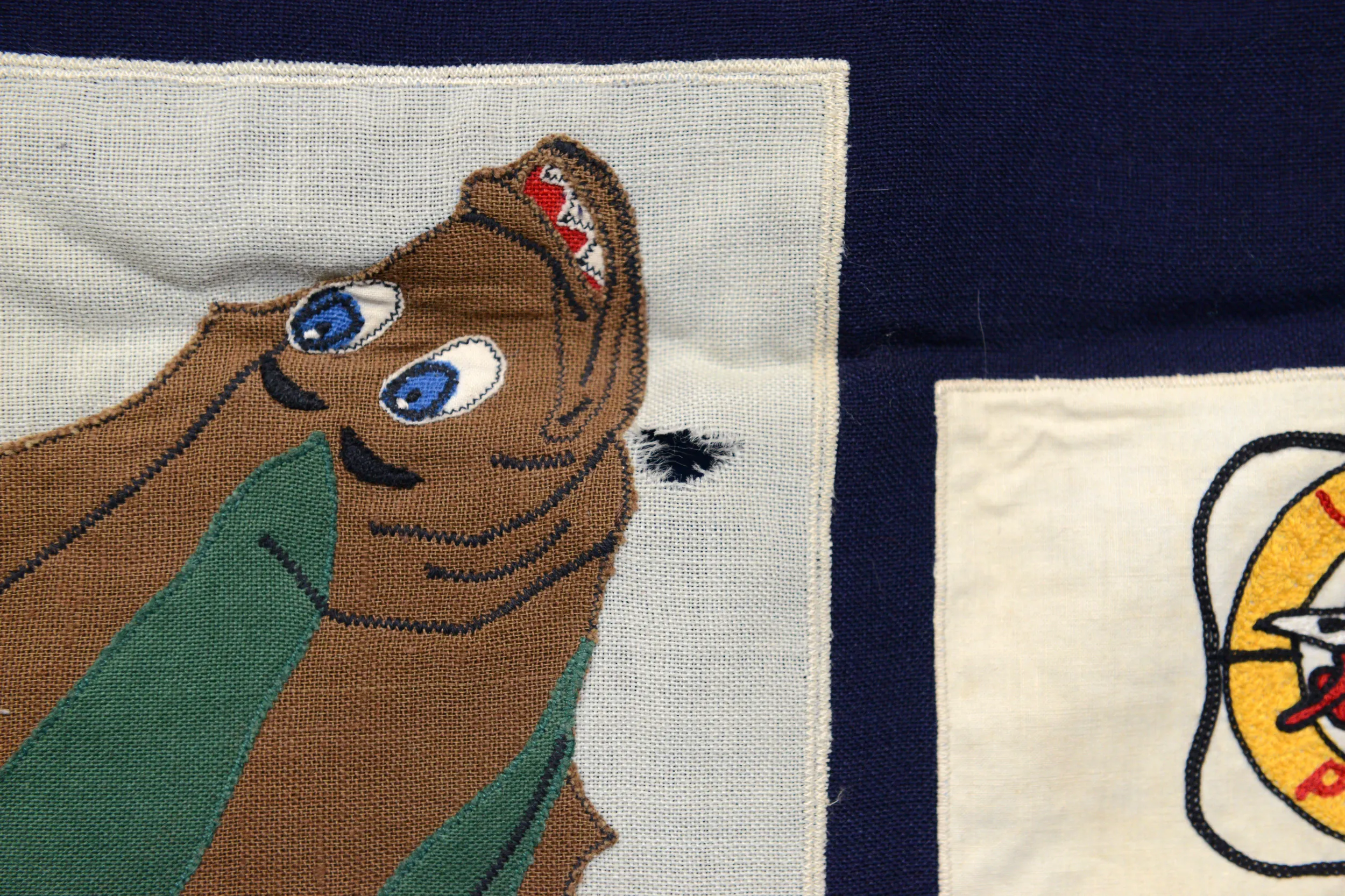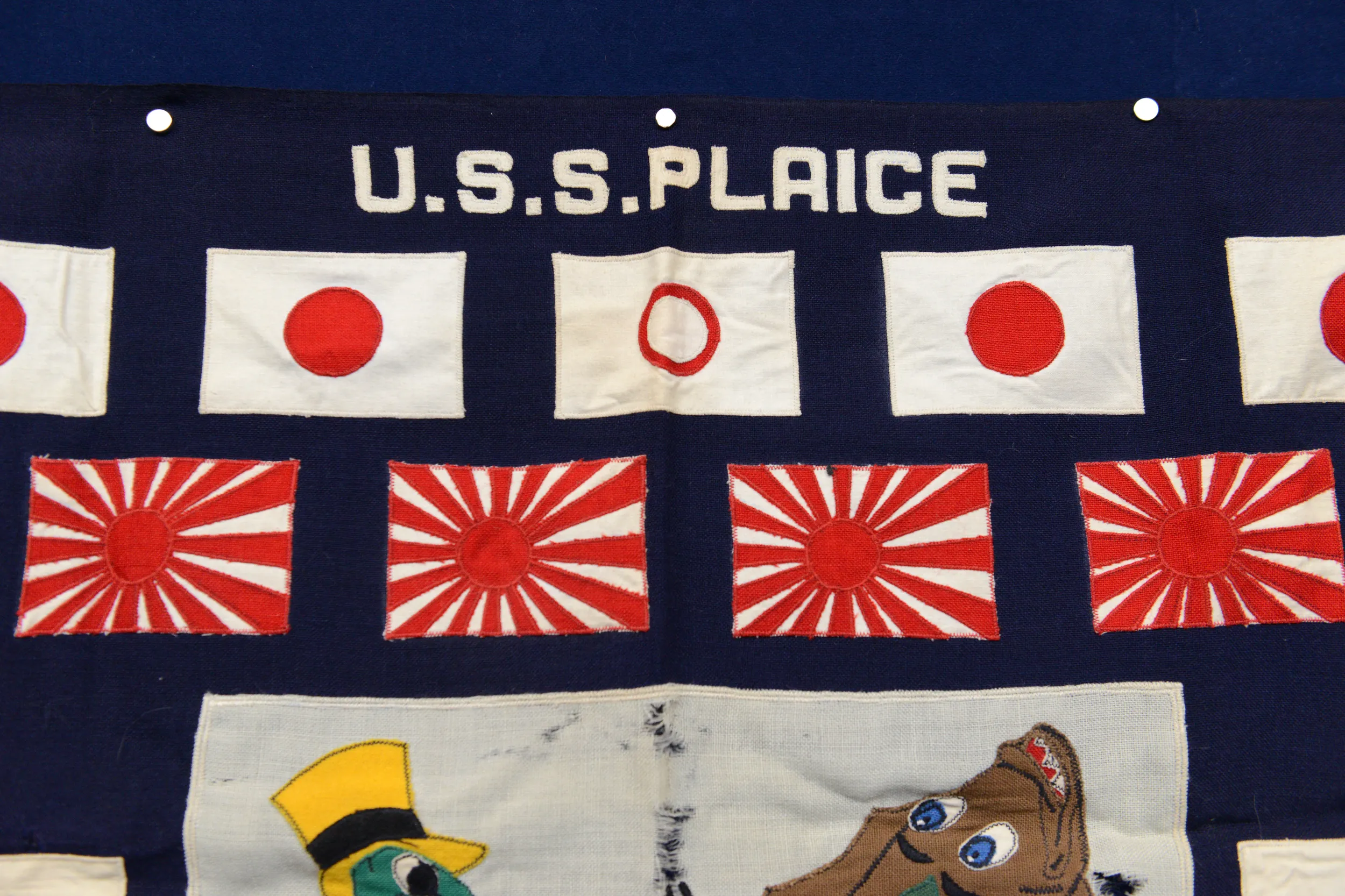GUEST: Well, this is a military flag from my father. He was in World War II on a submarine, the Plaice. As far as I understand, these all represent Japanese shipping that they killed or shot during the war.
APPRAISER: There is a lot of symbology with these, and the interesting thing about them is that it's not exactly standard. But essentially, the goal is to tell the story of the ship's service. It's hard to discern who made these because it varies from vessel to vessel and circumstance to circumstance. There aren't really any hard and fast regulations. We have the name of the vessel, the USS Plaice, which was a Balao-class submarine launched in 1943. The Plaice conducted war patrols in the South Pacific towards the end of World War II. And what we see on the flag is the insignia of the vessel, which is a Disney-inspired design. Walt Disney was very involved in military insignia in World War II, designing it, very enthusiastic supporter of the war effort, and a lot of ships and vessels carried Disney-inspired insignias. And what we see here is a record of the ship's service in those patrols.
GUEST: Okay
APPRAISER: Starting at the top, the regular Japanese flags indicate merchant vessels that were sunk during the operations of the Plaice
GUEST: Wow.
APPRAISER: When you see a red disc with a white center, that generally indicates a vessel that was damaged. Same thing for these. These are Japanese war flags. Each one of those denotes a warship that they engaged. These, of course, the same as the merchant ships, these denote a ship that was successfully sent to the bottom. And this denotes a ship that was damaged.
GUEST: Okay.
APPRAISER: These tend to indicate mine-laying missions.
GUEST: Oh, that they laid the mine.
APPRAISER: Exactly.
GUEST: I wondered.
APPRAISER: Also, later on in the war, one of the things that the submarines did to great effectiveness was they were lifeguards for the U.S. Army Air Corps, the Navy, and the Marine Corps. When they were flying strikes on particular targets, they would station submarines so that they could pick up survivors if they were shot down or they had to ditch at sea.
GUEST: I was told as a child that they'd gone into Tokyo Bay and picked up a pilot, and I'm not sure if it was this sub or the other one he was on.
APPRAISER: I did not find that in their history, but what I did find was that they picked up five survivors from a B-25 that had to ditch.
GUEST: Oh, my gosh.
APPRAISER: It's represented on their flag right there with the life raft.
GUEST: Oh! Okay.
APPRAISER: So that's what that indicates. And then the smaller pennants are for shipping that was under a certain tonnage-- small craft like harbor patrol vessels and that sort of thing.
GUEST: Okay. Can you tell me what these represent?
APPRAISER: Generally, these hashmarks indicate the number of war patrols that the vessel was on.
GUEST: Oh.
APPRAISER: It has some faults.
GUEST: Yeah, it does.
APPRAISER: The moths got to you a little bit. That certainly is not something that we would want to have happen, but in this case, it doesn't degrade too significantly from the value of the piece. Even though this is not the sub's main kill flag, of which there is one per vessel, a flag like this on the retail market would sell for between $2,500 and $3,000.
GUEST: Oh, my goodness, I had no clue, none. That's amazing.














